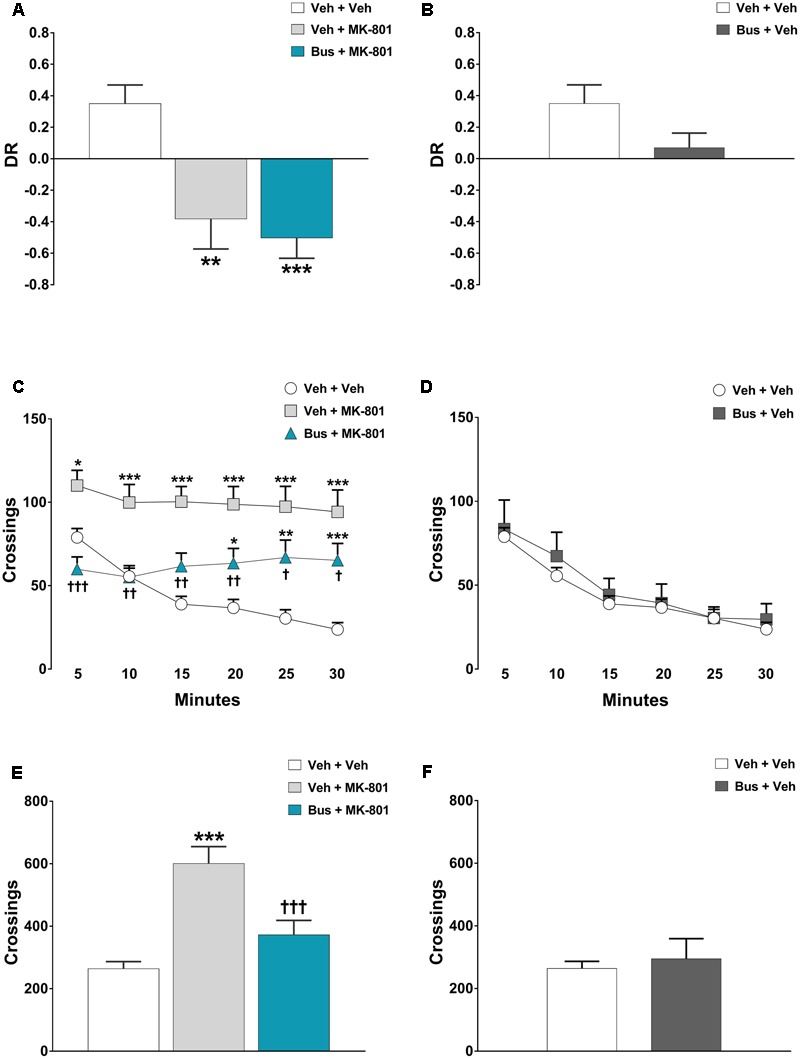FIGURE 4.

Buspirone was ineffective in preventing MK-801-induced TOR memory deficit and hyperlocomotion. Buspirone (Bus, 3 mg⋅kg-1, i.p.) or vehicle (Veh) and MK-801 (0.1 mg⋅kg-1, i.p.) or Veh were injected 45 min, and 20 min respectively, before the sample phase 2 or the open field test. (A,B) Discrimination ratio (DR) displayed by Veh + Veh (n = 5), Veh + MK-801 (n = 6), Bus + MK-801 (n = 5), Bus + Veh (n = 6), D3R-/- mice during the test phase. DR [(less recently experienced object exploration time - more recently experienced object exploration time)/total exploration time]. (C,D) Locomotor activity (crossings) at each 5-min time point displayed by Veh + Veh (n = 11), Veh + MK-801 (n = 11), Bus + MK-801 (n = 11), Bus + Veh (n = 6), D3R-/- mice. (E,F) Locomotor activity (crossings) over a 30-min test period displayed by the same mice. Data are shown as mean ± SEM. ∗∗∗p < 0.001, ∗∗p < 0.01, ∗p < 0.05 vs. Veh + Veh D3R-/- mice; †††p < 0.001, ††p < 0.01 and †p < 0.05 vs. Veh + MK-801 WT mice; (One-way or two-way repeated-measures ANOVA and Newman–Keuls post hoc test).
